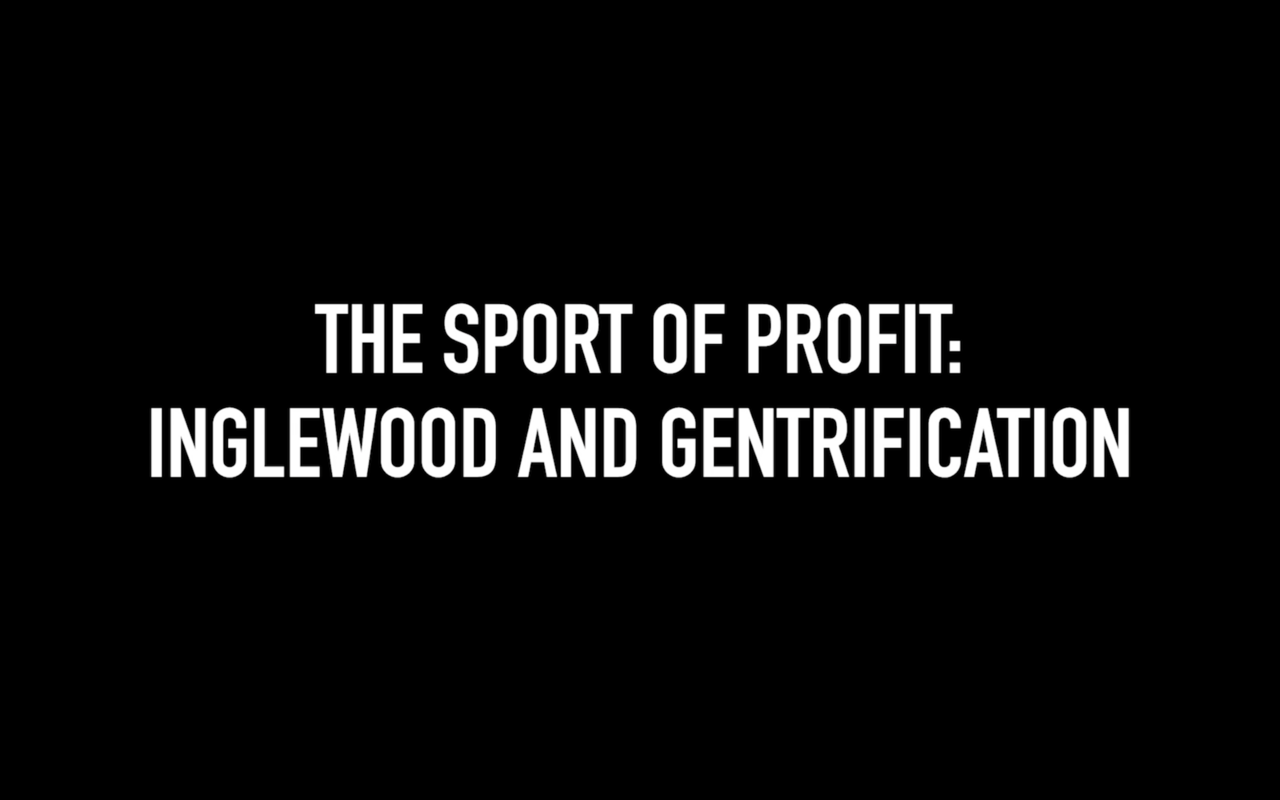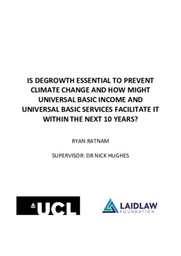THE SPORT OF PROFIT - RYAN RATNAM - LEADERSHIP IN ACTION 2022

In the Summer of 2022, I was given funding to go to Inglewood in Los Angeles County and film a documentary surrounding gentrification in the city. The link to said documentary is here - https://youtu.be/0lVGkOXtzdg
Below are some words of reflection on the leadership skills I gained from this project.
Laidlaw Documentary Reflective Report
Earlier this year, I proposed and was given permission to undertake my own independent leadership in action project. Building off from my research project the previous year, I aimed to take the skills I had learnt there and combine them with my pre-existing interest in filmmaking. I centred my film around the topic of gentrification, given its effects in the area of London that I am from. Thanks to the resources that the Laidlaw Foundation was able to provide for me, I centred in on gentrification in the Los Angeles County city of Inglewood. The gentrification going on there is in mostly stark juxtaposition to the gentrification I am familiar with, which is what I found especially fascinating.
Once I had decided where I would be undertaking my documentary, I began building contacts for interviews. Starting with no connections in Los Angeles was difficult. Therefore, I began looking at previous articles on gentrification in the surrounding areas and their sources. From there, I was able to get in contact with the Lennox-Inglewood Tenants’ Union, which were integral in securing interviews with tenants in Inglewood currently experiencing displacement and gentrification. I kept regular correspondence with them, both through social media, as well as online calls. From there, I began calling and emailing local businesses to see if they would be interested in speaking with me. I did the same with professors across the USA, as I wanted to also get a more academic look into this phenomenon. I took quite a ‘scatter-gun’ approach in contacting peoples, often receiving outright denials or no replies. I found that contacting as many places as possible was crucial in receiving any local participation. I also contacted the mayor’s office and was able to secure an interview with him. However, this took multiple emails and calls with different members of his office.
From there, it dawned on me that I actually needed somewhere to stay for the three weeks+ that I would be in LA. For this amount of time in a city with a very high cost of living, it was very difficult finding accommodation that was both affordable, whilst also being convenient and safe. I eventually began contacting universities to see if there was accommodation space that hadn’t yet been taken up by their Summer classes. I eventually found relatively cheap accommodation in UCLA.
I knew that I would need a partner for filming. Already being in contact with UCLA, I contacted their film department who were incredibly helpful, and paired me with a student from the University of Rochester who was staying in UCLA through the Summer. We got in contact and discussed availability as well as the specifics of filming including equipment and style.
Then began my search for equipment. I needed a camera, a mic and a tripod. All pieces of equipment, especially the first two, had to be good enough for an extensive documentary, although also affordable. The Laidlaw Network helped me out here, as I was directed to someone who had previously undertaken the scholarship and produced a documentary. He was able to recommend me equipment that fulfilled my exact specifications and needs.
At the end of June, I flew out to Los Angeles. Navigating a new city was quite challenging, especially given its subpar public transport, but also exciting. Over the next few days, I travelled to different places across LA, especially Inglewood, and set out taking tracking pictures and shots to be interspersed throughout the documentary. During this time, I experienced multiple delays regarding interview dates and had to push back a lot of my scheduled filming. Luckily, in case this happened, I booked my dates for longer than my filming schedule.
When it came to filming the interviews, my assistant and I set up the equipment and laid out to the interviewee what content we would be covering and if there’s anything they would want to include. I felt it was important to include their input on what they wanted and did not want to be part of the interview. The interviews varied in length, but all provided perspectives onto gentrification that I had not anticipated.
Once filming was complete, the next process was editing. I did not have experience with editing, so I researched how to use the software I wanted and went from there. It was definitely a timely process, but almost as integral as filming as it ensured the documentary would flow together cohesively. Regarding certain graphics I wanted to use, I was not familiar with coding, and therefore asked a friend to help me do that.
This was a leadership project at heart, and I learnt many pertaining skills before, during and after filming. The importance of time management was absolutely key. Managing multiple people meant that I had to organise myself according to my schedule, but also according to theirs. For this reason, I asked about availability far before I arrived in LA. However, my timings were impacted by some poor planning on my part. As a result, I have learnt that for any future project, it is integral to establish a schedule far in advance in which all the details have been sorted out. Second, communication across my team was very important. At first, I found that the people I was leading weren’t necessarily doing what I needed of them. Consequently, as filming went on, I made it very clear of my overall vision and what style I wanted this documentary to be. This communication was key as it showed my team exactly what they needed to do. This communication was two-way however, with some members suggesting that another way of filming could be better in certain scenarios. I believe that this two-way flow of communication is important for any team and allowed my documentary to be of the highest standard possible. However, the main thing I’ve learnt from this leadership in action project is the importance of collaboration in two senses. The first is that it’s important to know where my skills don’t lie. I knew that others would be better at coding and filming certain aspects than I would be and therefore reached out for help. The second is that this documentary rested on getting external sources to trust me. As a result, it was very important to make them a part of the creative process. This documentary was a product of true collaboration and the processes of bringing it altogether have given me integral leadership skills.

Please sign in
If you are a registered user on Laidlaw Scholars Network, please sign in